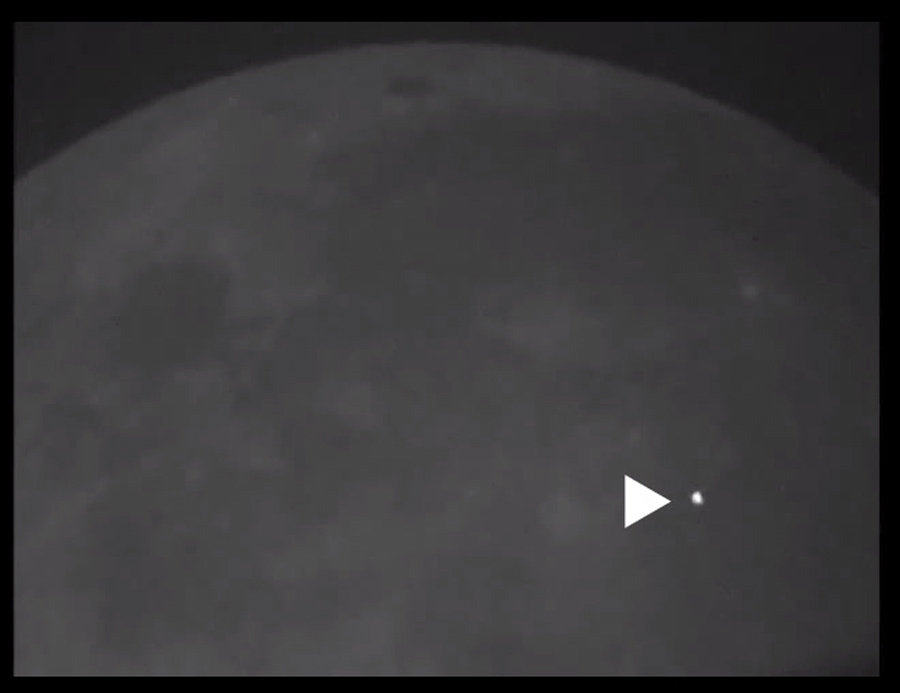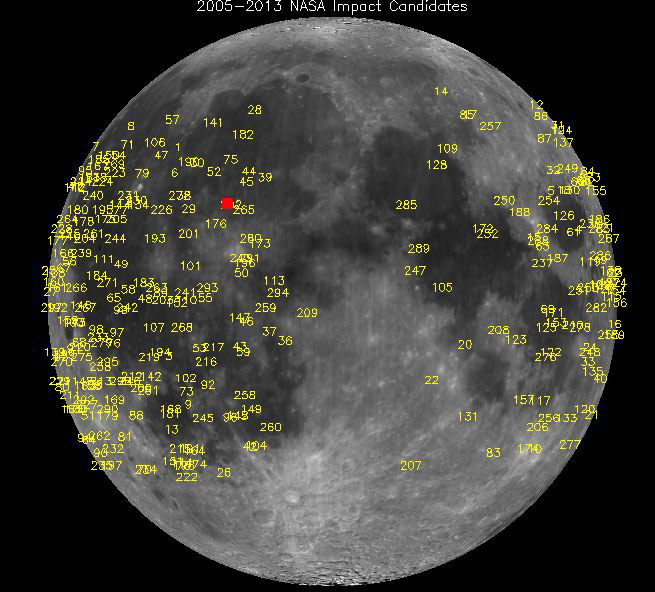Moon Crash Scene Investigation Tonight: See Telescope Views of Meteorite Impact

The lunar crash site from an meteorite strike on the moon is taking center stage in cosmic crime scene investigation and you can see the space rock impact zone online in a free webcast tonight (May 22).
The asteroid strike on the moon occurred on March 17 and marked the brightest lunar impact explosion seen since 2005, NASA scientists have said. The space agency announced the discovery of the impact last week.

Tonight, the online Slooh Space Camera will broadcast live views of the meteorite's impact site and you can watch the moon webcast on SPACE.com starting tonight (May 22) at 9 p.m. EDT (0100 GMT).
NASA scientists estimate that a 1-foot-wide (0.3 meters) meteoroid slammed into the moon at 56,000 mph (90,000 k/h) to carve a 65-foot (20 m) crater into the lunar surface. The resulting explosion would have been visible from Earth without a telescope and had the power of about 5 tons of TNT, NASA officials said.
"This is an unprecedented, first-time-ever event," astronomer and Slooh commentator Bob Berman said in a statement. "Apparently, a number of brilliant fireballs tore through Earth’s atmosphere just as the lunar surface received a visible impact bright enough to create a one-second point of light, seen by anyone watching the moon at that moment. This suggests that a fairly dense swarm of meteoroids zipped through our orbit at that time, two months ago."
During tonight's webcast, Slooh will stream in feeds from their observatory site in the Canary Islands off the coast of Africa while Berman and other experts will provide information about other near-Earth objects and meteorite impacts like the Feb. 15 meteor explosion in Siberia.
NASA scientists suspect the small asteroid that hit the moon weighed about 88 pounds (40 kilograms) at the time of the impact.
Get the Space.com Newsletter
Breaking space news, the latest updates on rocket launches, skywatching events and more!
While the Earth's atmosphere prevented those space rocks from slamming into the planet, the atmosphere-less moon has no protection from these kinds of impacts.
Other scientists are also keeping an eye on the new moon crater. NASA's Lunar Reconnaissance Orbiter might take photos of the impact site, and researchers will continue to keep track of other moon- crashing space rocks.
To watch the Slooh webcast directly through the Slooh Space Camera website visit: http://events.slooh.com

Follow Miriam Kramer on Twitter and Google+. Follow us on Twitter, Facebookand Google+. Original article on SPACE.com.
Join our Space Forums to keep talking space on the latest missions, night sky and more! And if you have a news tip, correction or comment, let us know at: community@space.com.

Miriam Kramer joined Space.com as a Staff Writer in December 2012. Since then, she has floated in weightlessness on a zero-gravity flight, felt the pull of 4-Gs in a trainer aircraft and watched rockets soar into space from Florida and Virginia. She also served as Space.com's lead space entertainment reporter, and enjoys all aspects of space news, astronomy and commercial spaceflight. Miriam has also presented space stories during live interviews with Fox News and other TV and radio outlets. She originally hails from Knoxville, Tennessee where she and her family would take trips to dark spots on the outskirts of town to watch meteor showers every year. She loves to travel and one day hopes to see the northern lights in person. Miriam is currently a space reporter with Axios, writing the Axios Space newsletter. You can follow Miriam on Twitter.









